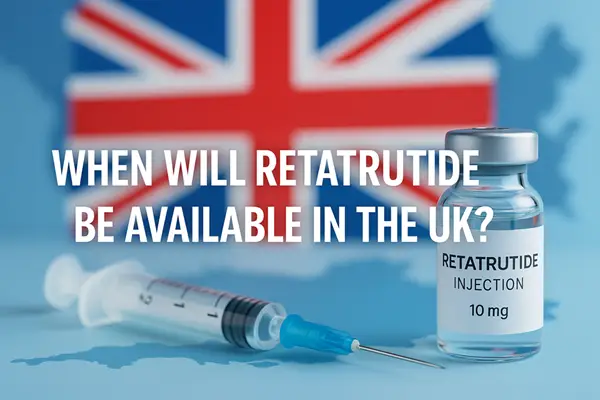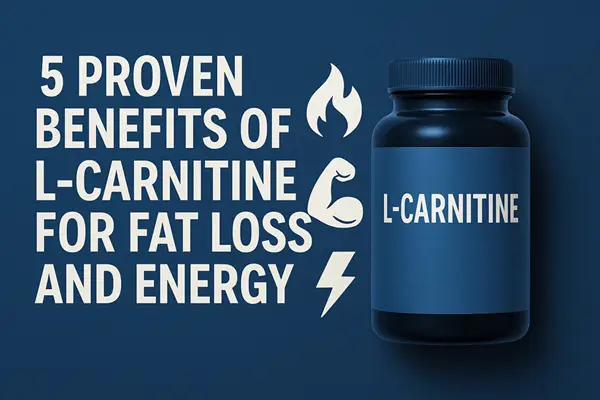Retatrutide is an experimental “triple-agonist” peptide under clinical development. It is not licensed in the UK (or EU) yet. If it becomes approved, there will be a long regulatory pathway, safety data to review, pricing, and distribution challenges. Meanwhile, many people interested in it will see “grey-market” offers (risky). Below, you get a clear breakdown: timeline, roadblocks, what to expect in UK rollout, legal risks, and more.
What is Retatrutide?
Retatrutide is a next-generation peptide therapy being tested for weight loss and metabolic health. It aims to act on three hormone receptors (GLP-1, GIP, glucagon) simultaneously, rather than only GLP-1 as with drugs like semaglutide (e.g. Ozempic) or GLP-1/GIP dual agonists like tirzepatide.
In clinical trials so far, it has shown very significant weight reductions, along with improvements in insulin sensitivity and metabolic markers.
However:
- It is not yet approved by major regulatory bodies (FDA, EMA, MHRA).
- Access is currently limited to clinical trials or unregulated “research chemical” sources.
- The long-term safety profile is still under investigation.
So, the allure is high, but so are the unknowns.
The regulatory & approval timeline in the UK / EU
To understand when (or whether) retatrutide might arrive legally in the UK, you need to know how drug approvals work. Here’s a realistic pathway, with caveats:
| Stage | What It Involves | Typical Duration / Uncertainties | Risks / Bottlenecks |
| Ongoing Clinical Trials / Phase 2 → Phase 3 | The sponsor (drug developer) must conduct larger trials to prove safety, efficacy, tolerability | Could take several years (2–5+ years) | Trial failures, side-effect discoveries, funding cutoffs |
| Regulatory Submission (EMA / MHRA / EU centralised) | Compilation of all data into a dossier, application to EMA (for EU) or to MHRA (for UK) | 1–2 years or more for review | Rejections, requests for more data, delays |
| Post-approval Safety Monitoring | Even after approval, ongoing monitoring (pharmacovigilance) required | Continuous | Safety issues might lead to restrictions or withdrawals |
| Market Launch / Pricing / Reimbursement | Negotiations with NHS / payers, manufacturing scale, distribution | Months to years | High cost, limited supply, unequal access by region |
Given the above, a realistic earliest UK availability (for prescription use) might be 3–6 years from now, assuming everything goes smoothly. But that’s optimistic.
Also, with Brexit, the UK may require additional steps beyond EMA approval, or the sponsor might submit separately to the MHRA, which could slow or fragment the rollout.
What to expect once it is available
If (and when) retatrutide becomes legally available in the UK, here’s what you should expect as a consumer or patient:
- Prescription only
It will almost certainly be regulated as a prescription medicine, not over the counter. - Strict eligibility / criteria
Given its novelty and cost, use may initially be limited to certain patient groups (e.g. BMI threshold, comorbidities, failed other therapies). - High cost / reimbursement challenges
New, innovative therapies often carry premium pricing. Whether the NHS or private insurers will reimburse is uncertain. - Follow-up and monitoring
Users will be subject to blood work, safety checks (liver, pancreas, cardiovascular, etc.), dose adjustments, side-effect management. - Supply constraints
Early supply might be limited; waiting lists or priority allocation may occur. - Branding, formulation, dosing protocols
The final version might differ from early trial formulations in delivery method (injection, stability, storage), dosage escalation, side-effect mitigation (antiemetic protocols, etc.).
So, the “dream” of a wonder weight-loss shot will be tempered by real clinical, economic, and logistic constraints.
The grey market & unregulated offers: Proceed with extreme caution
Because of the hype, many “suppliers” already advertise retatrutide as a research chemical or peptide product outside regulatory oversight. The Renovo post warns strongly about this: no guarantee of authenticity, contamination risk, dosage inaccuracy, lack of oversight, and legal ambiguity.
If someone buys retatrutide from an unregulated source:
- You may receive a counterfeit or a different compound altogether.
- Purity may be compromised (toxins, heavy metals, microbial contamination).
- Dosing may be wildly off (too weak to work, or dangerously strong).
- No medical supervision means side effects or dangerous interactions go unmanaged.
- Legal exposure: importing non-approved substances for human use may contravene UK law.
In short: high risk, low assurance.
What you (the reader) should do now — The safe approach
Until retatrutide is fully approved and regulated, here is a path that balances potential benefit and safety:
- Talk to a medical professional
Don’t self-prescribe or self-source peptides. A doctor or endocrinologist should review your history, labs, and suitability. - Use approved alternatives
GLP-1 therapies (e.g. semaglutide, liraglutide) are already licensed and established. If weight loss / metabolic therapy is needed, they are safer bets while retatrutide matures. - Monitor clinical trials
Keep an eye on UK / EU clinical trial registries. If trials open locally, getting in means safer access under medical supervision. - Be extremely cautious with unregulated sources
Avoid high risk offers. If a supplier claims “pure retatrutide,” ask for COAs, batch data, third-party lab results. - Prepare for cost and long wait times
Even after approval, pricing and access will make it difficult for many initially.



